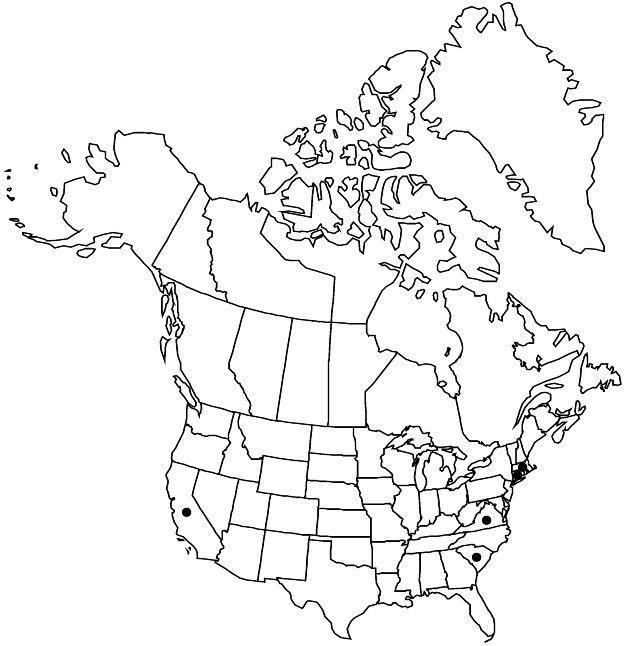Elatine ambigua
Bot. Misc. 2: 103, suppl. plate 5. 1830.
Herbs, submersed, 1.5–4 (–8) cm. Stems prostrate or erect, branched. Leaves green; stipules lanceolate, 1 mm, margins dentate, apex acute; petiole 0.1–1 mm; blade lanceolate or oblongelliptic, 2–6 × 0.5–1.5 mm, base cuneate, apex obtuse to acute. Pedicels 0.5–2.5 mm, recurved in fruit. Flowers: sepals 3, equal, oblong-ovate or broadly lanceolate, 0.5 × 0.3 mm; petals 0 or 3, reddish, long-elliptic or ovate, 1–1.5 × 0.5 mm; stamens 3; styles 3. Capsules oblong-ovoid, 3-locular, 1 mm diam. Seeds 10 per locule, narrowly oblong, straight or curved 15–30°, 0.3 × 0.1 mm; pits obscure, round, length 1–4 times width, in 6 rows, 19–25 (–30) per row.
Phenology: Flowering late spring–summer.
Habitat: Pools, marshy places, rice fields.
Elevation: 0–100 m.
Distribution

Introduced; Calif., Conn., Mass., S.C., Va., s, se Asia, also in Europe, s Pacific Islands, Australia
Discussion
Elatine ambigua is a popular aquarium plant usually misidentified as E. trianda. It is also a common weed in rice fields. This species probably was introduced to California, South Carolina, and Virginia through rice farming. Its introduction to Connecticut and Massachusetts probably was through aquarium disposal or fish stocking.
Selected References
None.